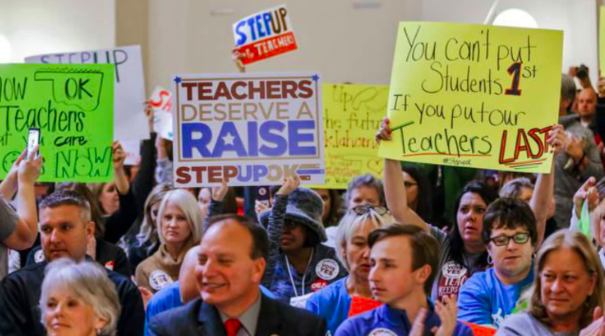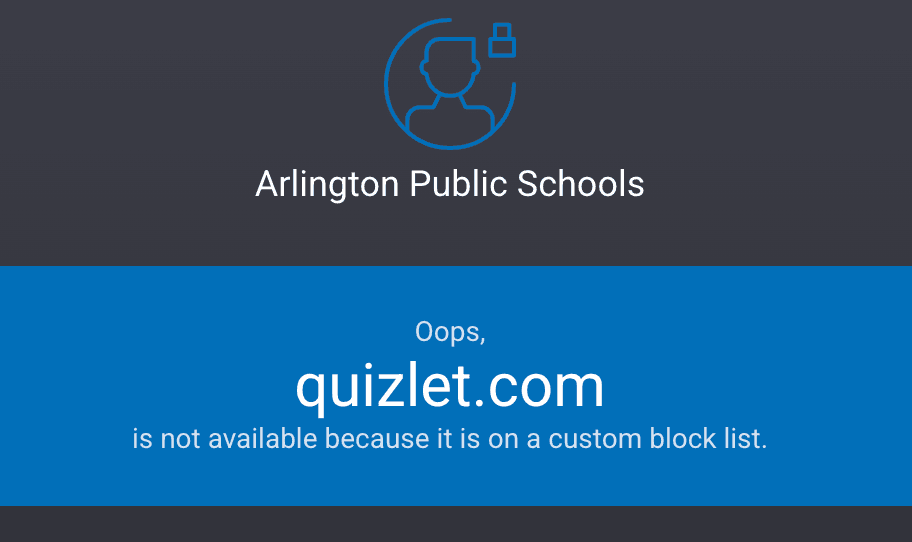On April 2, 2018, Oklahoma teachers left their homes in the early hours of Monday morning, just like normal. However, instead of heading to the classrooms, they took to the streets of Oklahoma City to protest the low pay they receive and the lack of funding that the Oklahoma State Senate allocates to public schools. They took their struggle directly to their lawmakers, encircled the capital building, waved signs, shouted slogans and demanded reform.
Following several weeks of student-led walkouts and demonstrations to promote safety in schools, it was time for America’s teachers to take on the spotlight, going on strike first in West Virginia, and now Oklahoma. Oklahoma educators make an average of $41,880 a year, the lowest of any state, and a study published earlier this year ranked Oklahoma public schools 45th in the nation, truly illustrating the changes that need to be made to their education system.
Public schools in Oklahoma spend just $9,327 on each student, the seventh lowest of any state and the consequences can be seen in students’ test scores. Since abandoning the Common Core standards currently in use in 42 other states, Oklahoma students’ proficiency in various subject have fallen even further below the national average. The standards seeked to ensure that all high school graduates are prepared to take college level courses and have sufficient mathematics and English language skills. They were replaced with the Oklahoma Education Standards (OES), whose primary goal was to have less diction over the exact focus of the curricula and allow teachers to teach however they see fit. State superintendent Joy Hofmeister has claimed that the drop in student test scores is due to the OES having a more difficult grading system, however, other states such as Virginia and Nebraska, who also abstain from the Common Core, do better in similar subject proficiency tests.
The struggle facing teachers in Oklahoma is not a new one, however. Student teachers often earn their education credentials at Oklahoma’s top universities, and then travel south to Texas, where schools are able to promise a much more generous salary, as well as more benefits. Even Oklahoma’s 2016 teacher of the year left the state for Texas after unsuccessfully leading a ballot initiative to give Oklahoma’s educators a $5,000 pay rise. This trend has contributed to a teacher shortage in the state, forcing school districts to cut curricula and deploy nearly 2,000 emergency-certified instructors in order to fill the gap.
Tulsa Public Schools and Oklahoma City Public schools, the two largest districts in the state, were closed from April 2 until a settlement was reached late on April 12. This resulted in almost 100,000 students in grades K-12 to be out of school for more than a week, with an estimated 400,000 other students missing school in smaller districts scattered across the state.
But the teachers did not simply take a sick day; Tulsa educators, in a remarkable demonstration of spirit and courage, marched 110 miles in seven days to their state capital in Oklahoma City to show how deeply they care for their students. Along the way, the teachers were greeted with several acts of generosity and kindness, including a law firm that bought them 60 pizzas for lunch one day, a sanitation company that set up portable toilets, and an anonymous Oklahoman who paid for 14 rooms at an Econo Lodge in Chandler when the teachers had nowhere to stay for the night. Heather Cody, a third grade teacher, and one of the head coordinators of the march, made her message perfectly clear for Oklahoma’s lawmakers.
“We just walked 110 miles for our students. What are you willing to do for our students?” Cody said.
Up until the compromise that was reached last Thursday, the state’s Republican lawmakers were hesitant to pass any legislation that increased taxes. While teachers secured a raise of about $6,000 depending on experience, the Oklahoma State legislature failed to pass any other meaningful legislation, meaning the state’s schools will have to simply make do with their outdated textbooks and supplies. Despite not receiving their initial demand of a $150 million hike in education spending, Oklahoma Education Association (OEA) president Alicia Priest still claimed “a victory for teachers.”
Another demand initially made by the OEA was the repeal of a capital-gains tax exemption (a tax cut that benefits the wealthy). However, most of the tax money that will be used to increase teacher wages will end up being paid by average, middle class Oklahomans.
Although many teachers are not satisfied with the OEA’s decision to end the strike, they understand that their quest for education reform will not end here. They warn that their displeasure will have grave consequences for their political leaders in the upcoming 2018 midterm elections.
While the struggle faced by Oklahoma teachers in these early weeks of April were remarkable and no doubt historic, it is part of a larger movement which was sparked last month in West Virginia. Traditional Republican voters who support low tax, low service societies have been forced to reevaluate what they consider important as education moves further and further up their list of priorities. Teachers in Arizona wore red and surrounded their state capital building in an effort to secure higher wages, and educators in the Republican state of Kentucky have also gone on strike to protest the lack of funding their schools receive. America’s education revolution is now well underway.





































